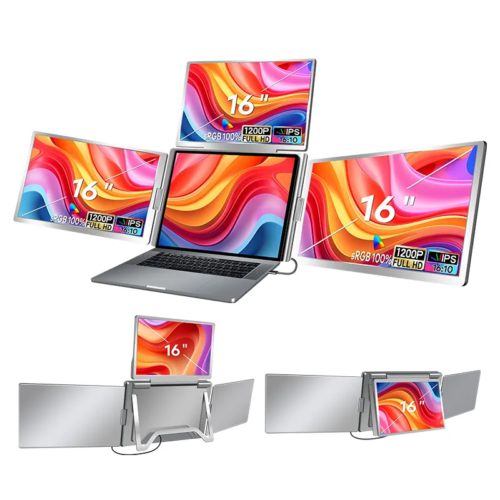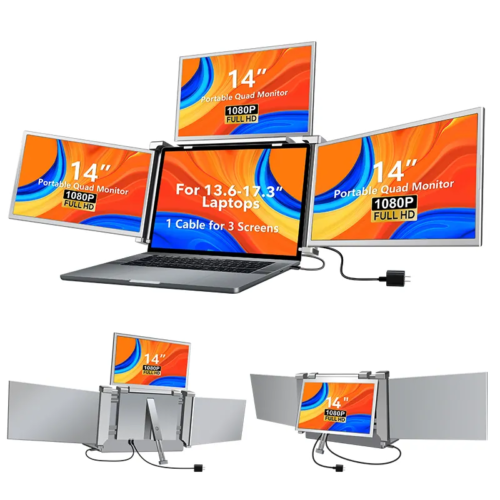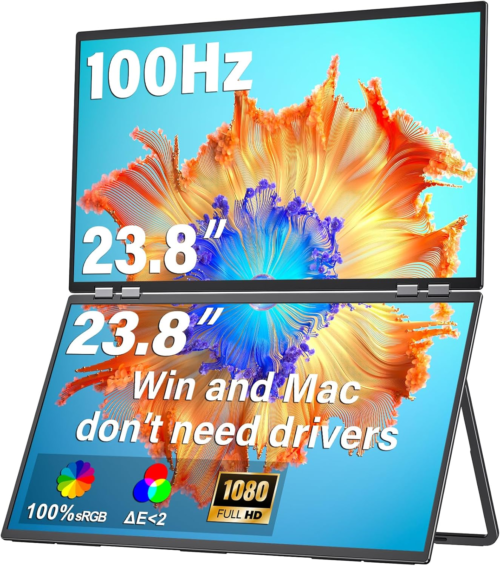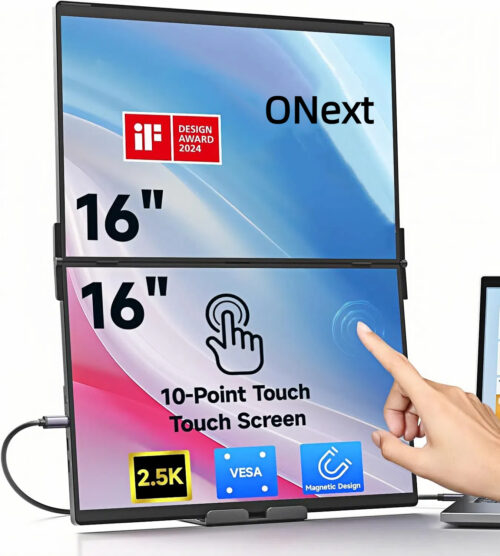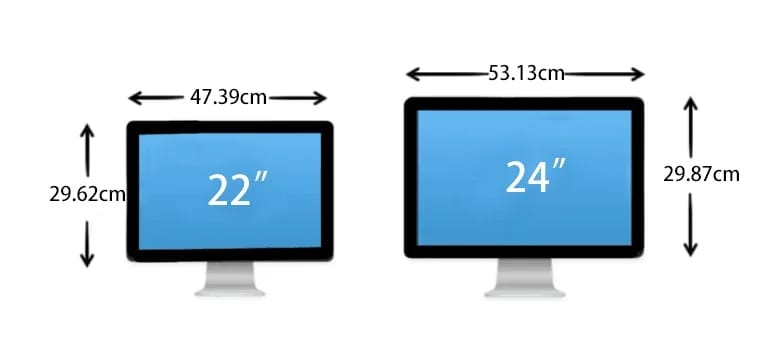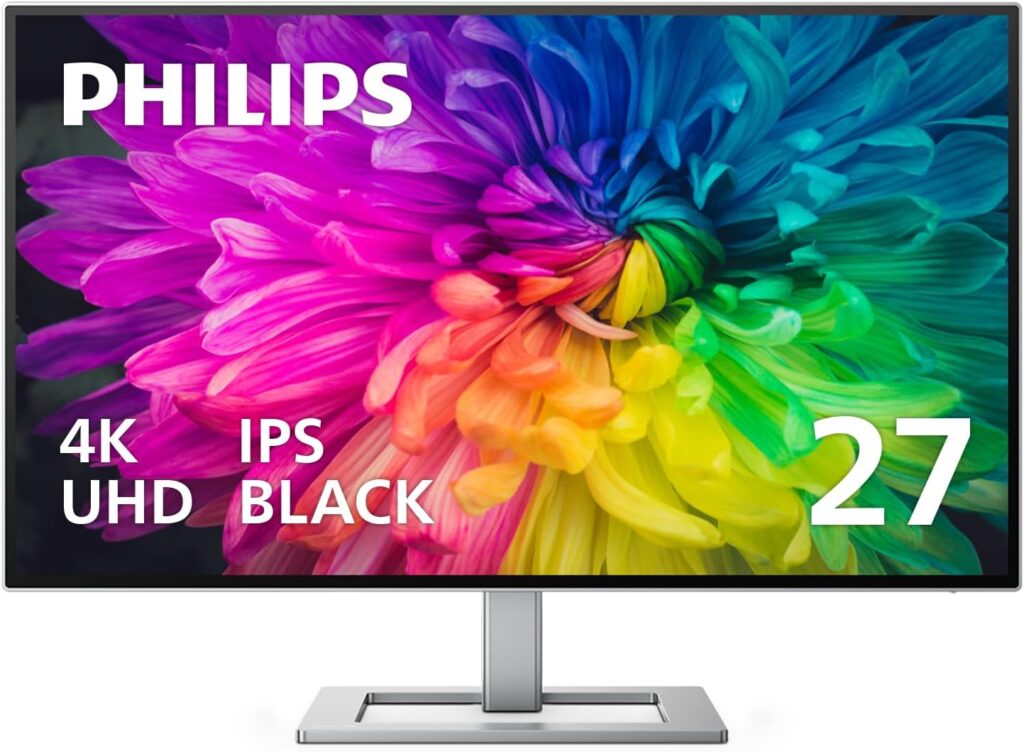A great gaming setup isn’t just about the latest graphics card or a high-end keyboard—it all comes together on the monitor. Whether you’re deep into competitive gaming, enjoying immersive single-player adventures, or juggling work and play on the same screen, choosing the right monitor is crucial. But with so many options—curved vs. flat, high refresh rates, and 4K resolution—how do you decide which one fits your needs? More importantly, can a single monitor deliver both gaming excellence and productivity?
This guide will walk you through everything you need to know about gaming desktop PC monitors. We’ll break down key factors like resolution, refresh rates, and panel types, compare different monitor styles, and discuss real-world use cases. By the end, you’ll have a clear understanding of how to choose a monitor that seamlessly balances gaming and work.
What This Guide Covers
- How to select the right gaming desktop PC monitor
- Key specs: resolution, refresh rate, and panel types
- Finding the right balance between gaming performance and work efficiency
- Comparing different types of gaming monitors
- Curved vs. flat screens: Pros and cons for gaming and productivity
- High refresh rates vs. standard refresh rates: Which matters for your setup?
- Real-world use cases for gaming and work
- Competitive gaming and esports
- Single-player immersion and cinematic gaming
- Productivity and multitasking on a gaming monitor
- Future trends in gaming monitors
- The rise of OLED and mini-LED technology
- Hybrid monitors designed for both gaming and work
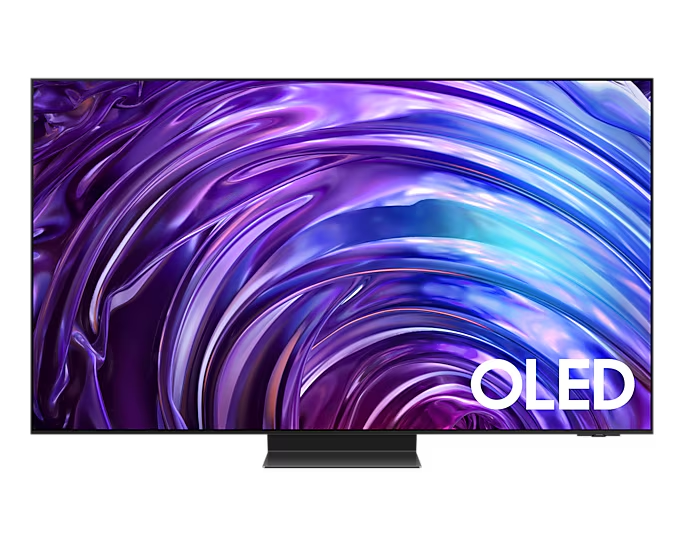
How to Choose the Right Gaming Desktop PC Monitor for Your Needs
Finding the best gaming monitor starts with understanding what matters most to you. Do you need ultra-fast response times for competitive gaming? Are vivid colors essential for creative work? Or do you want a versatile screen that can handle both?
Resolution: Finding the Right Balance
Resolution determines image clarity. For most gamers, 1080p (Full HD) is a solid starting point, while 1440p (QHD) offers a sharper image without straining your graphics card. If you have a high-end setup, 4K (UHD) provides incredible detail, though it demands powerful hardware. For office work, 1440p is often the sweet spot, offering crisp text and ample screen space.
Refresh Rate: Smoother Motion, Better Gameplay
Refresh rate, measured in Hertz (Hz), dictates how many times the screen updates per second. Higher refresh rates, such as 144Hz or 240Hz, provide smoother visuals—crucial for fast-paced games. While standard office tasks don’t benefit much from high refresh rates, gamers will appreciate the difference, especially in competitive settings.
Panel Type: Color Accuracy vs. Speed
Different panel technologies impact gaming and productivity differently:
- IPS (In-Plane Switching): Great color accuracy and wide viewing angles, making it ideal for both gaming and office use. Slightly slower response times compared to TN panels.
- TN (Twisted Nematic): Offers the fastest response times, favored by esports players. However, it has limited color accuracy and viewing angles.
- VA (Vertical Alignment): A compromise between IPS and TN, providing deep contrast and decent response times. Well-suited for gamers who also watch videos or edit media.
Size and Ergonomics
A monitor’s size affects both gameplay and work efficiency. A 24 inch monitor to 27 inch screen is versatile, offering enough space without overwhelming your desk. Adjustable stands with tilt, height, and swivel adjustments enhance comfort during long hours of use.

Comparing Different Types of Gaming Monitors
Monitors come in different styles, each catering to different needs. Some gamers prefer curved screens for immersion, while others prioritize high refresh rates for competitive play. Let’s compare these options.
Curved vs. Flat Monitors
- Curved Monitors: Enhance immersion by wrapping around your field of vision. They can also reduce eye strain and improve multitasking. However, they tend to be pricier and may not be ideal for all gaming genres.
- Flat Monitors: The traditional choice, typically more affordable and better suited for competitive gaming where precise visuals matter. They also work well in multi-monitor setups.
High Refresh Rate vs. Standard Refresh Rate
- High Refresh Rate (144Hz, 240Hz+): Ideal for competitive gaming, offering smoother motion and reduced blur. Requires a strong GPU.
- Standard Refresh Rate (60Hz, 75Hz): Works well for casual gaming and office use. Easier on the budget and compatible with most hardware.
Real-World Use Cases for Gaming and Work
A great monitor should be versatile enough to handle both gaming and productivity. Here’s how different types of users can benefit:
Esports and Competitive Gaming
For esports players, speed is everything. A high-refresh-rate monitor (144Hz or higher) with a low response time (1ms) is essential. While TN panels are traditionally favored for their speed, IPS panels have improved significantly, providing both speed and color accuracy.
Single-Player Gaming and Immersion
For story-driven or open-world games, a curved monitor with an IPS or VA panel enhances immersion. A 1440p or 4K resolution helps bring out the details in richly designed environments.
Productivity and Multitasking
For users balancing work and gaming, a 27-inch 1440p IPS monitor is an excellent choice. The higher resolution makes text sharper, and the added screen space improves multitasking efficiency.
Future Trends in Gaming Desktop PC Monitors
Monitor technology is advancing rapidly. Here are some key trends shaping the future:
OLED and Mini-LED Displays
- OLED: Provides perfect blacks and outstanding contrast, making it ideal for gaming and media consumption.
- Mini-LED: Offers higher brightness and enhanced HDR performance with advanced local dimming.
Hybrid Monitors for Gaming and Work
More monitors are being designed for dual use, incorporating USB-C ports, built-in KVM switches, and ergonomic stands. These features cater to professionals who want a single monitor for both work and play.
Conclusion: Finding the Right Balance
Choosing the perfect gaming monitor comes down to understanding your priorities. Whether you need a high-refresh-rate screen for competitive gaming, a color-accurate display for immersive single-player adventures, or a versatile monitor for both work and play, there’s a model that fits your needs. Investing in the right monitor enhances not just your gaming experience but also your overall productivity, making it a crucial part of any setup.
Hot Sale Products
ONext 100% SRGB 16 Inch Quad Monitor 1 Cable for Trifold Laptop Monitors, Vibrant 3-Display for Windows & MacOS
ONext 14″ Quad Monitor Laptop Screen Extender – FHD 1080P, 1 Cable for 3 Screens, Portable IPS for 13.6″-17.3″ Laptops (Win/Mac M1-M3)
ONext 23.8″ FHD100Hz 100% sRGB Dual Screen Laptop Extra Monitor – 315° Adjustable for Work & Gaming
ONext 16″ Laptop Screen Extender Foldable Dual Stacked Portable Monitor with Built-in Hub, Magnetic Design, Single Cable for 1080P Triple Monitor Setup
ONext 18.5″ Laptop Dual Screen Monitor 1080P 100Hz, Foldable Double Screen Laptop Display for Win/Mac
